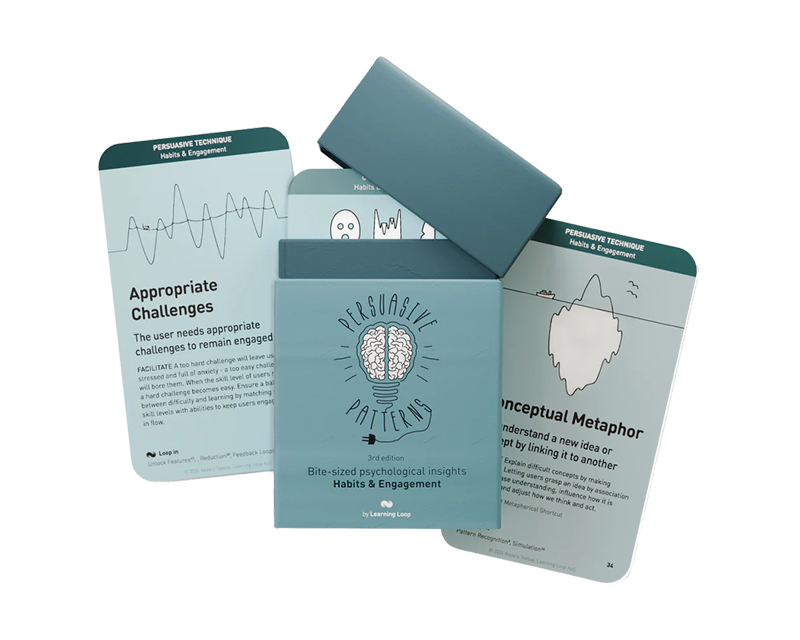
Role Playing encourages users to adopt a certain role or identity, prompting them to act in a manner consistent with that role.
Consider a software application designed for project management. When a user first logs in, they’re given an option to select a role: Project Manager, Team Member, or Stakeholder. Depending on the role they choose, the interface, prompts, and tasks are tailored to fit that specific role’s needs. For instance, a “Stakeholder” might see a dashboard highlighting project progress and budget, while a “Team Member” has a view prioritizing tasks and collaboration tools. This role-centric design not only personalizes the user experience but also helps users understand and perform their roles more effectively, enhancing the overall value of the software.
The Stanford Prison Experiment
In the 1970s, a groundbreaking study emerged from Stanford University. Participants were divided into two groups, with one group taking on the role of prison guards and the other assuming the role of prisoners. The objective was simple: to understand the psychological impacts of perceived power and authority. However, what unfolded in the Stanford Prison Experiment was beyond anyone’s expectations. Within a matter of days, the “guards” began to display authoritarian behavior, while the “prisoners” started showing signs of extreme stress and emotional distress. The experiment, intended to last two weeks, was terminated after just six days due to its intense psychological effects on participants. This study unveiled the profound impact role-playing can have on human behavior and cognition, highlighting its potential use and implications in various sectors, including design.
Zimbardo, P. G., Haney, C., Banks, W. C., & Jaffe, D. (1973). The Stanford prison experiment: A simulation study of the psychology of imprisonment. Stanford University.
Role-playing taps into the principle of “embodied cognition.” This principle suggests that our cognitive processes are deeply rooted in our body’s interactions with the world around us. When individuals assume a role, they don’t just act – it influences their thinking, feeling, and overall perception.
Role playing is a psychological technique that allows individuals to step into the shoes of another, adopting their mindset, emotions, and behaviors. This process often leads to a phenomenon known as self-persuasion. When individuals take on a role, they begin to internalize the beliefs, attitudes, and behaviors associated with that role, leading to genuine shifts in their own perspectives and behaviors.
The principle is rooted in cognitive dissonance theory. When individuals act in ways that are inconsistent with their beliefs, they experience discomfort. To resolve this discomfort, they often adjust their beliefs to align with their actions. Role playing capitalizes on this by encouraging actions (through role adoption) that can then lead to genuine belief and attitude shifts.
The concept of role-playing has ancient origins, evident in early theater and religious rituals. In the 20th century, with the rise of psychoanalytic and behavioral theories, role-playing was recognized as a powerful therapeutic tool, allowing individuals to express and confront emotions. Over time, its influence extended beyond therapy, reaching areas like education, business training, and more recently, user experience design.
Placing users in specific roles allows them to immerse themselves in scenarios that can foster empathy, understanding, or a sense of responsibility. This pattern can be particularly effective when trying to convey complex ideas, stimulate behavior change, or drive user engagement by making tasks or activities more relatable or contextually rich. The primary goal of Role Playing is to tap into the user’s imagination and emotions, creating a deeper connection between the user and the product or service.
Role Playing capitalizes on the human tendency to internalize and act according to roles they assume. By encouraging users to take on a certain role, whether it’s a hero in a game, a responsible eco-citizen, or an expert in a particular field, designers can influence behaviors and decisions in line with the characteristics and responsibilities of that role.
Designing products with Role Playing
Role playing, as a psychological principle, taps into the potent power of self-persuasion. The concept of self-persuasion goes beyond mere external influence, diving deep into an individual’s ability to motivate and convince themselves from within. This internal motivation, when incorporated into design, can significantly enhance user engagement and experience.
As you design digital products and systems, setting clear community norms can help in constructing environments where users can adopt roles that might be unfamiliar or even contrary to their real-world personas. Such settings encourage users to explore and engage with content in a unique way, as they navigate their roles within these digital communities. For instance, creating a system where users are prompted to advocate for a particular position might facilitate a deeper engagement, as they are now not only consumers but also active participants.
Moreover, the effectiveness of role playing in inducing change or persuasion can be understood through its intricate relationship with self-persuasion. It’s a known fact that individuals often give more credence to beliefs and arguments they perceive as self-originated. This means that designs that enable users to feel as if they are crafting their own narrative or argument will often be more compelling than those where the narrative is imposed upon them.
Consider, for instance, a digital learning platform that allows users to “teach” virtual students. As users step into the role of an educator, they are likely to engage more deeply with the content, mastering it not just for themselves, but also to effectively “teach” it to their virtual classroom. Such an approach leverages both role playing and the power of self-persuasion to create a more enriching learning experience.
Another application can be observed in the dynamics of online communities. Platforms like Stack Overflow or Reddit thrive on the roles users take on – be it as a questioner, answerer, moderator, or even a casual observer. These roles, often reinforced by system rewards or community recognition, drive engagement and loyalty. Users are not just passive consumers; they are active contributors, each playing a role that shapes the community’s narrative.
By constructing environments that encourage users to take on specific roles, designers can foster deeper engagement and create more meaningful experiences by crafting narratives that resonate, and building systems that support and reward role-based interactions.
For designers, understanding the power of role playing and self-persuasion offers a unique opportunity to create more engaging and transformative user experiences. Here’s how:
- Let users adopt personas
By encouraging users to adopt a specific persona or role within a digital environment, designers can guide users to think and act in ways that align with that persona. This can be particularly effective in training modules or simulation-based platforms where users “step into the shoes” of a particular character or role. - Scenario-based interactions
Let users engage in scenarios where they must make decisions or take actions as if they were in a specific role. This can be seen in some financial apps that allow users to “play” as an investor, making decisions based on market simulations. - Feedback and reflection
After role-playing activities, provide users with feedback on their decisions and actions. This reflection can solidify the self-persuasion process, leading to more profound shifts in attitudes or beliefs. - Provide meaningful narratives
Integrate stories or scenarios where users can envision themselves in specific roles. Ensure narratives resonate with the target audience and align with the product’s goals. - Design role-specific features
Create features that cater to and enhance the specific roles users might take on. For instance, if users are to play the role of “teachers,” provide tools that allow them to craft lessons or quizzes. - Implement reward systems
Recognize and reward users for actively participating in their roles. This could be in the form of points, badges, or other incentives that signify mastery or contribution. - Ensure flexibility
Allow users to switch roles or adopt multiple roles if they desire. Design systems that are flexible enough to accommodate evolving user interactions. While guiding users into roles can be effective, it’s crucial to ensure they don’t feel forced. Allow them the autonomy to choose, modify, or even reject roles. - Foster community interaction
If applicable, design spaces where users can interact, share, and learn from one another. Community interactions can reinforce role-playing, as users see others embodying roles effectively. - Offer role-based tutorials
Create onboarding processes tailored to different roles and ensure that users understand the capabilities and responsibilities associated with each role.
Ethical recommendations
Role-playing, by its very nature, immerses users in an identity or role. Unethical application can lead designers to manipulate users into roles that compromise their values or principles, pushing them to act in ways they wouldn’t typically consider. Overemphasis on a virtual role might blur the lines between the virtual and real worlds for some users. This can have a long-term psychological impact, especially if the role-playing experience is intense or negative.
Encouraging users to overcommit time, energy, or resources can be a negative consequence of role-playing. For instance, a game might push players into roles that require hours of daily commitment, affecting their real-world responsibilities.
Some platforms might tempt users to share more personal information than necessary under the guise of “completing their profile” or “enhancing their role.” This can lead to potential breaches of privacy or misuse of personal data.
Role-playing can be tied to in-app purchases, where users might feel compelled to spend money to enhance their role or status within a platform, leading to unintended financial consequences.
Always prioritize the user’s well-being. Design the role-playing experience to be enriching and not exploitative and ensure that users have clear ways to opt out or adjust their engagement level without penalties. Ensure that you are on the right side of the tracks on these points:
- Data Protection
If the role-playing feature collects any user data, ensure robust data protection measures. Users should be aware of what data is collected and how it’s used. Always obtain clear consent. - Commitment
Design the role-playing experience in such a way that users can engage without feeling obligated to devote excessive time or resources. Avoid designs that push users into feeling that they have to maintain their role at the cost of real-world responsibilities. - Psychological safeguards
Monitor user engagement and introduce mechanisms to alert users if they’re spending an unhealthy amount of time in a role-playing scenario. Offer resources or support if users seem to be negatively impacted by their role-playing experience.
Real life Role Playing examples
MyFitnessPal
This app allows users to role-play as nutritionists. By logging food and exercise, users get insights into their health metrics, making decisions as if they were health experts.
On the network of sub-forums, users adopt various roles, such as moderators or key contributors depending on the subreddit. As users engage more deeply with a particular subreddit, they can earn “karma” points, shaping their influence and responsibilities within that community.
Stack Overflow
On the question-answer site for programmers, users earn reputation points through community participation. As they perform good deeds, they unlock features that enhance the capabilities of their chosen roles (moderator, creator, etc.).
Trigger Questions
- How can the design encourage users to adopt and immerse themselves in a specific role?
- How does this role enhance the value or experience for the user?
- What real-world responsibilities or identities might this role-playing potentially conflict with or enhance?
- In what ways can we allow the user to customize or have autonomy within the role?
- How can we ensure that the role remains relevant and engaging over time and doesn't become monotonous?
- How can the design ensure users have autonomy in choosing, modifying, or rejecting roles?
- How can the role-playing experience be structured to align with the user's values and principles without manipulation?
- Are there mechanisms in place to protect users from overcommitment or potential negative psychological impacts of role-playing?
- How does the role-playing aspect collect, use, or protect user data, and are users informed and consenting?
Pairings
Role Playing + Storytelling
Embedding a narrative within the role can enhance user immersion. Video games often use this combination, allowing players to take on roles (like a hero or a strategist) and progress through a captivating story, making the experience more engaging.

People act according to their persona

We engage, understand, and remember narratives better than facts alone
Role Playing + Achievements
Platforms like online communities or learning portals can reward users with badges or titles that correspond to the roles they have played or mastered, such as “Expert Contributor” or “Master Coder.”

People act according to their persona

We are engaged by activities in which meaningful achievements are recognized
Role Playing + Cognitive Dissonance
Design experiences that present users with choices, where their decisions might cause a slight internal conflict, pushing them to reconcile and engage deeper with the platform. A fitness platform, for example, could offer roles like “Health Buff” but occasionally present indulgent meal options, pushing users to reconcile their choices with their roles.

People act according to their persona

When we do something that is not in line with our beliefs, we change our beliefs
Role Playing + Rewards
When combined, role-playing and rewards can provide users with a more immersive and incentivized experience. As users take on specific roles and achieve goals or milestones associated with that role, they are rewarded, reinforcing their behavior and commitment to the role they’ve assumed. This combination not only deepens the user’s immersion into the experience world but also provides tangible incentives to progress and further engage with the product or service.

People act according to their persona

Use rewards to encourage continuation of wanted behavior
Role Playing + Unlock Features
When role-playing is paired with the unlocking of features, users are encouraged to dive deeper into their roles. As they progress or excel in their adopted roles, new features or capabilities become available to them, enriching their experience and granting them new avenues to explore within the platform or service.

People act according to their persona

Reward specific behaviors by enabling new capabilities
Role Playing + Levels
Combining role-playing with levels offers users a structured progression path within the role they’ve assumed. As users take on and navigate through their roles, they progress through different levels or stages, each offering a new set of challenges or experiences. This pairing adds depth to the role-playing experience, giving users clear milestones to aim for and a sense of achievement as they level up.

People act according to their persona

Use levels to communicate progress and gauge users' personal development
A brainstorming tool packed with tactics from psychology that will help you build lasting habits, facilitate behavioral commitment, build lasting habits, and understand the human mind. It is presented in a manner easily referenced and used as a brainstorming tool.
Get your deck!- Engaging Students In Social Judgment Theory by Mallard
- Self-persuasion at Wikipedia (en)
- Williams, M. (1968). Role-Playing. Health Education Journal, 27, 139-142.
- Hovland, C. I., et. al. (1953) Communication and persuasion; psychological studies of opinion change, New Haven, Yale University Press
- Mallard, Jessica. “Engaging Students In Social Judgment Theory.” Communication Teacher 24.4 (2010): 197-202.
- Ewald, J. D. (2012). "Can you tell me how to get there?": Naturally-occurring versus role-play data in direction-giving. Pragmatics, 22, 79-102.
- Kahneman, D., & Tversky, A. (1979). Prospect theory: An analysis of decision under risk. Econometrica, 47(2), 263-291, is a foundational paper in this area, although not exclusively about role-playing.
- Barsalou, L. W. (2008). Grounded cognition. Annual Review of Psychology, 59, 617-645.
- Milgram, S. (1963). Behavioral study of obedience. Journal of Abnormal and Social Psychology, 67(4), 371-378.
- Bandura, A., Ross, D., & Ross, S. A. (1961). Transmission of aggressions through imitation of aggressive models. Journal of Abnormal and Social Psychology, 63(3), 575-582.
- Goffman, E. (1959). The presentation of self in everyday life. Anchor Books.
